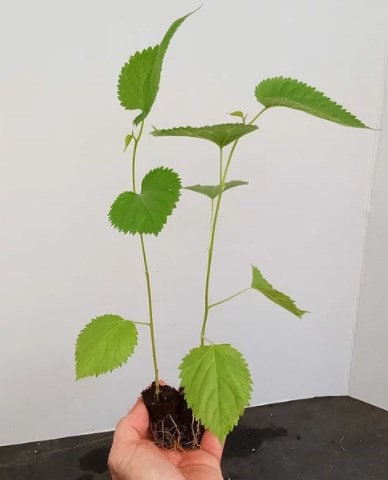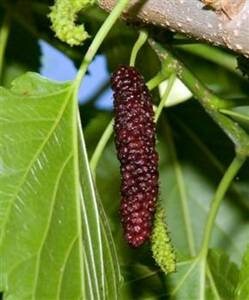Mastering the Art of Growing Dwarf Everbearing Mulberry Trees
Dwarf Everbearing Mulberry trees, known scientifically as Morus nigra, are a compact and versatile variety that allows gardeners of all levels to enjoy the sweet rewards of fresh mulberries without needing a large garden space. Perfect for container gardening and small yards, these dwarf trees provide abundant fruit throughout the growing season, making them a valuable addition to any edible landscape. This blog post will guide you through the steps to successfully grow Dwarf Everbearing Mulberry trees, ensuring a continuous harvest of delicious berries.
Understanding Dwarf Everbearing Mulberry Trees
Dwarf Everbearing Mulberry trees are cherished for their ability to produce small, flavorful berries repeatedly throughout the growing season. Unlike traditional mulberry trees that can reach towering heights, these dwarf varieties typically grow only 6 to 8 feet tall, making them ideal for container planting or as part of a smaller garden setup. They are also known for their attractive foliage and can serve a dual purpose as both a fruit-bearing plant and an ornamental feature.
Selecting the Right Location
1. Sunlight Needs: Dwarf Everbearing Mulberries thrive in full sun, requiring at least six hours of direct sunlight each day. Ample sunlight is crucial for optimal fruit production and overall plant health.
2. Soil Preferences: These trees are not particularly fussy about soil type but prefer well-draining soil with a neutral pH. If growing in containers, ensure the potting mix is fertile and well-aerated to support healthy root growth.
Planting Dwarf Everbearing Mulberry Trees
1. Best Time to Plant: The optimal time to plant Dwarf Everbearing Mulberries is in early spring or fall. This timing allows the tree to establish itself during milder weather, avoiding the stress of extreme temperatures.
2. Planting Method: If planting in the ground, dig a hole twice the width and the same depth as the root ball. If planting in containers, choose a pot at least 12-18 inches in diameter with good drainage holes. Mix organic compost into the native soil or potting mix to enrich the planting medium, place the tree, then fill and tamp down around it to secure. Water thoroughly after planting to settle the soil and eliminate air pockets.
Care and Maintenance
1. Watering: Water regularly to keep the soil evenly moist, especially during dry spells. Dwarf mulberries in containers may require more frequent watering to ensure they don't dry out.
2. Mulching: Apply a layer of organic mulch around the base of the tree to help retain soil moisture, regulate soil temperature, and suppress weed growth. Be cautious not to let the mulch touch the trunk to avoid moisture-related issues.
3. Fertilization: Feed your Dwarf Everbearing Mulberry tree with a balanced, all-purpose fertilizer in early spring and again in mid-summer to promote growth and fruiting. Avoid over-fertilization, which can lead to excessive leaf growth at the expense of fruit production.
4. Pruning: Prune lightly in late winter or early spring to remove any dead or damaged branches and to shape the tree. Since Dwarf Everbearing Mulberries bear fruit on new growth, minimal pruning encourages more berries.
Harvesting Dwarf Everbearing Mulberries
Dwarf Everbearing Mulberries begin to produce fruit within a year of planting and can continue to bear fruit from spring through fall. Harvest the berries when they turn deep purple or black and detach easily from the stem. Regular harvesting encourages the tree to produce more fruit.
Overcoming Challenges
While generally robust, Dwarf Everbearing Mulberries can encounter pests like birds and insects that are attracted to the fruit. Protective netting can help shield the berries from birds, and routine inspections can manage insect pests before they cause significant damage.
Conclusion
Growing Dwarf Everbearing Mulberry trees is an enjoyable and fruitful venture that offers the pleasures of fresh berries right from your patio or garden. With minimal space requirements and care needed, these dwarf trees are suitable for gardeners looking to maximize their yield in a limited area. By following these tips, you can ensure a healthy tree and a plentiful harvest, enjoying the sweet taste of mulberries throughout the season.







